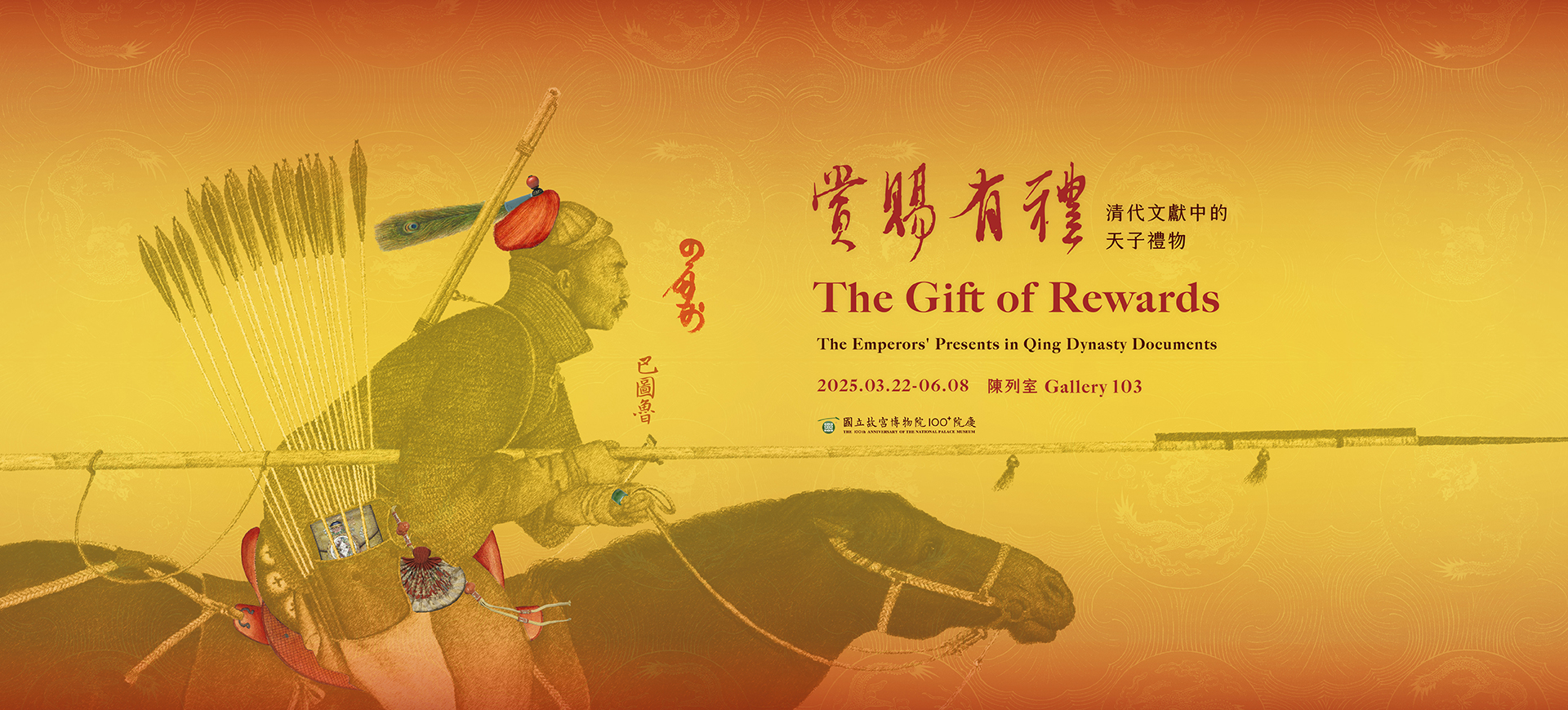The Forms of Presents
According to the contents of palace memorials of gratitude in the National Palace Museum collection, there were various types of items for reward with differences in meaning. From characters written by the emperor to imperially calligraphed poems, books, paper, inkstones, purses, folding fans, bolts of satin, hats and robes, oxen, sheep, horses, imperial foodstuffs, medicines, and supplements, the list of items given as rewards also included jade thumb rings, porcelain vases, snuff bottles, and agate boxes--even currency in the form of silver ingots and silver sycees. The range of presents was indeed quite impressive.
Since the types and attributes of these gifts varied greatly, it is difficult to judge whether they were related to the particular preferences of the emperors who gave them. However, the gift of reward often did not take the form of gold or jewelry as we would imagine, but sometimes it involved a much more practical consideration for daily use.
Flint Pouch: A Manchu Tradition under Imperial Favor
The palace memorial states: “The flint is of a new design, and the pouch is one that masters carry personally.” The flint pouch mentioned here was a common item worn at the waist by men during the Qing dynasty. It typically contained a fire striker, flint, and tinder. The fire-striker was made of metals such as steel or iron, and the tinder was made of fine, easily combustible material. By striking the fire-striker against the flint, one could ignite the tinder and make a fire. The flint pouches or boxes were essential items for the Manchus living in northeastern China when traveling.
For the imperial nobility of the Qing dynasty, carrying flint pouches not only served a practical function but also symbolized remembrance of their ancestors and adherence to traditional Manchu culture. Although the item on display here may not be the exact one Lu received, officials who were granted such an item clearly held a special place in the emperors’ esteem.
Kesi: Delicacies from the Imperial Kitchen
-
Palace memorial on gratitude for the bestowing of a melon
Presented by Ji Chengbin, Regional Commander of Henan
October 31, 1725, Qing dynasty
故宮011582In palace memorials of gratitude submitted by officials, one often finds mention of a special food-related gift known as kesi, which in Manchu language means favor or reward; the term originated from Manchu communal eating traditions. According to a palace memorial submitted by Zhao Hongxie (1656–1722) in 1717: “On two occasions, I was granted kesi, all of which were portions from the imperial meals. Furthermore, by imperial grace, a variety of imperial delicacies were specially bestowed upon me, which were tastes that I had never known before.” This indicates that kesi was often composed of exquisite dishes from the imperial kitchen, distributed as rewards.
There were, in fact, many kinds of kesi. In a 1726 palace memorial, Mao Wenquan wrote that Emperor Yongzheng had gifted him not only a handwritten character “fu” (blessing) but also “feng yang kesi.” “Feng yang” referred to a traditional Manchu method of preserving mutton—by cleaning the carcass of a sheep and air-drying it in a well-ventilated area, resulting in long-lasting meat. Surprisingly, the Hami melon—now a popular fruit—was also once listed as a kesi gift. In 1725, Ji Chengbin received from Emperor Yongzheng a Hami melon from the Hami region in Xinjiang and Gansu, and quickly submitted a palace memorial to express his gratitude to the emperor—though he mistakenly wrote it as “Ha-mi melon” instead of the proper form.
Snuff Bottles: Imperial Trinkets from Palace Workshops
On display in the exhibition venue is a copper snuff bottle made by the palace workshop during the Kangxi era. The rim is decorated with pink peonies, each side of the bottle features a pair of butterflies, and the flanks display six-petaled floral motifs in yellow. The color palette is elegant, and the patterns are finely rendered. Although this particular snuff bottle may not be the exact one gifted to Zuo, it is easy to imagine that the one he received was equally refined and ingenious.
The term “painted enamel” refers to the technique of painting with enamel colors on the surface of an object. This technique originated in Europe and was introduced to China during the Kangxi period. Because of its dazzling and ornate style, it became a favorite of Emperor Kangxi, who even established palace workshops specifically for developing native Chinese painted enamelware. The year 1718 marked the peak of Emperor Kangxi’s enthusiasm and confidence in this craft. Perhaps it was for this reason that he chose to gift painted enamelware to his officials—an act of imperial favor meant to foster closer ties between a ruler and his ministers.
White Jade Thumb Ring Carved with Fortune Character: Emperor Jiaqing’s Recognition of and Rewards for Merits
The White Lotus Society was a secret folk religion active from the Southern Song dynasty to the Qing dynasty, known for mobilizing followers and inciting unrest throughout various historical periods. By the late Qianlong reign, the society’s activities intensified, posing a serious threat to the Qing court. Cheng De and his colleagues successfully apprehended 68 members of the society, restoring public order and reaffirming imperial authority. Thus, Emperor Jiaqing bestowed upon them generous rewards.
This particular thumb ring, made of white jade, is carved in relief with the character “喜” (fortune). In the National Palace Museum’s collection, other thumb rings inscribed with the character “壽” (longevity) or verses composed by Emperor Qianlong can be found. These types of thumb rings were often more ornamental than functional, frequently bestowed by emperors as tokens of honor to meritorious officials.


